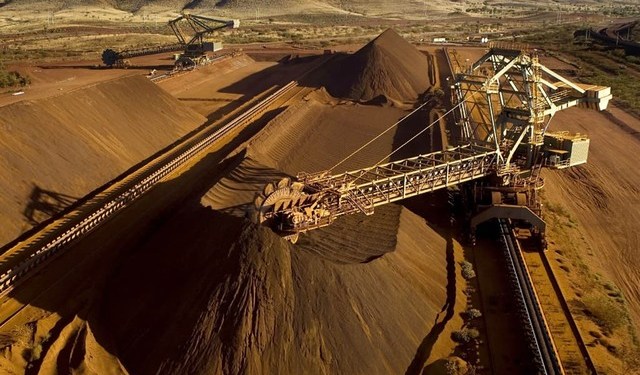The global oil market will be watching Houston this week for signals out of the CERAWeek by IHS Markit conference on the path forward on US sanctions on PDVSA, the future of the OPEC-led production cut agreement, the impact of record-shattering US oil output and much more.
Here’s a look at the key issues likely to be in the spotlight at CERAWeek, which begins Monday morning:
THE LOSS OF VENEZUELA
US sanctions on PDVSA, Venezuela’s state-owned oil company, are likely to be a key focus of the conference, which will include a session on Tuesday to include Luisa Palacios, the newly-picked chairwoman of Citgo.
Palacios has declined to publicly discuss Citgo’s plans to move away from PDVSA since she was formally confirmed to the board on February 22.
The sanctions, which have sparked a de facto ban on US imports of Venezuelan crude and accelerated the historic decline of the OPEC member’s oil sector, have also caused Citgo to begin to cut ties with PDVSA, its parent company.
S&P Global Platts Analytics forecasts that US sanctions have caused Venezuelan crude output, which averaged about 1.2 million b/d in January, to fall to 900,000 b/d in February.
SHALE KEEPS GROWING
US oil production will again be a popular topic at CERAWeek as output likely crossed the 12 million b/d mark recently, a record mark fueled largely by growth in the Permian.
Executives with key US producers, including Hess, Chevron, ConocoPhillips, and ExxonMobil, are scheduled to speak at the conference, potentially offering insight into how US production complements the rest of the world’s output, whether it is enough to match projected output fallbacks in Mexico and Venezuela this year and what happens when large new oil supplies from Guyana begins coming online about a year from now.
Other speakers will likely address the geopolitical implications of rising US production at a time sanctions are removing Iranian and Venezuelan barrels from the market.
US oil production averaged just below 11.85 million b/d in December 2018 and forecast to cross the 12 million b/d threshold in January 2019, according to the US Energy Information Administration. US oil production will climb by more than 2.76 million b/d to 13.72 million b/d by 2024, the International Energy Agency said in a report Monday.
UPSTREAM INVESTMENT
In that report, IEA said that global upstream capital expenditure for oil and gas is expected to increase by 4% in 2019, the third consecutive year of increases.
While global upstream spending, of around $500 billion, remains nearly $300 billion lower than the peak of 2014, a decrease in costs of between 30% to 40% means that the industry is able to do significantly more with less than only a few years ago,” IEA said in the report.
As most observers suspected going in, the fourth-quarter reporting season made clear that companies operating in US unconventional plays plan to spend less than last year. The period from November 2017 to November 2018 saw enormous growth of about 1.8 million b/d according to the most recent government figures. Typically, less capital invested means less growth, but not always: efficiencies and continuously evolving well completion designs have made it possible to increasingly drill more and up the volumes from every well at less cost.
Still, most companies have premised their 2019 capital plans on $50/b oil, implying a moderation of activity over the year.
One feature of the quarter’s year-end 2018 calls and financial reports was an increasing emphasis on other uses for cash income besides production growth – notably returning money to shareholders and stock repurchases, which operators carefully signaled to the market.
LATIN AMERICAN GROWTH
Mexico was in the process of liberalizing its energy industry in the hopes of unleashing its oil and gas resources, and bringing competition into the downstream refined products markets. However, newly elected President Andres Manuel Lopez Obrador has slowed the liberalization process, suspending upstream auction rounds by three years. Lopez Obrador is now said to be reconsidering those auction rounds this year, as Mexico’s oil production continues to slide.
In contrast, Brazil’s newly elected President Jair Bolsonaro has promised to open up his country’s oil and gas industry to outside investors, in an effort to exploit that country’s subsalt reserves. Argentina is in the process of developing its shale resources. The country is home of one of the largest shale deposits in the world, the Vaca Muerta.
CANADIAN CURTAILMENTS
Conference speakers will also likely address recent production curtailments by the Alberta government, which were imposed to reduce the deep price discounts paid for Canadian heavy crude. Pipeline takeaway capacity remains tight, and while crude by rail is an option, producers are looking for longer term solutions to deliver crude into the US Gulf Coast, where refiners are decreasing their imports of Venezuelan heavy crude because of sanctions.
OPEC MISSING?
For the past two CERAWeek meetings, OPEC officials and US producers have met over dinner to “compare notes,” as OPEC Secretary General Mohammad Barkindo has put it.
While US producers likely have questions about the future of the 24-country OPEC/non-OPEC coalition’s 1.2 million b/d production cut accord, set to expire at the end of June, the apparent lack of OPEC representation in Houston this week may complicate those talks.
Breaking a recent tradition, Saudi Arabia’s oil minister will not address the conference and representatives of several of OPEC’s top producers are not on the conference’s agenda. Sultan Ahmed Al Jaber, the UAE’s minister of state and CEO of the Abu Dhabi National Oil Company, is scheduled to appear at the conference Tuesday morning.
— Brian Scheid, [email protected]
— Starr Spencer, [email protected]
— Jeff Mower, [email protected]
— Daniel Rodriguez, [email protected]
— Edited by Norazlina Jumaat, [email protected]
Source: S&P Global Platts



























